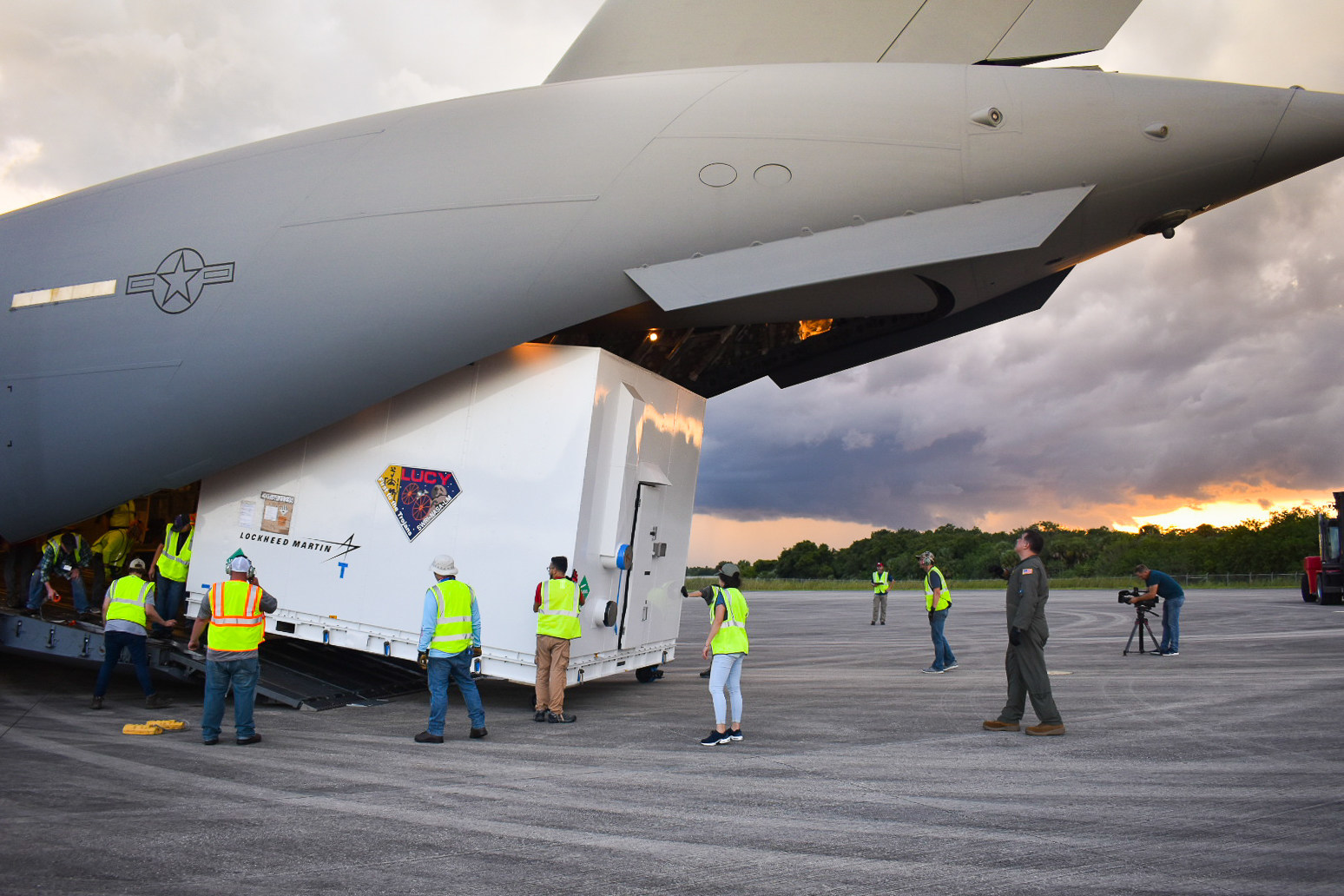
There have been many missions to various asteroids and comets, by NASA and other space agencies. But one group of asteroids that still hasn’t been visited is the Trojans – until now. NASA’s Lucy spacecraft will be the first to travel to these asteroids, which share an orbit with Jupiter. And now, Lucy has arrived at the Kennedy Space Center in Florida, to begin preparations for its launch this fall, NASA announced earlier this week.
“This spacecraft is so much more than a piece of hardware, it’s a work of art, and I’m incredibly proud of how the team came together to build this through a global pandemic,” said Rich Lipe, Lockheed Martin Lucy program manager. “To be here now, starting to prepare for launch, is a terrific feeling.”
Lucy has been designed and built by Lockheed Martin and is scheduled to be launched on Oct. 16, 2021, with a 23-day launch window.
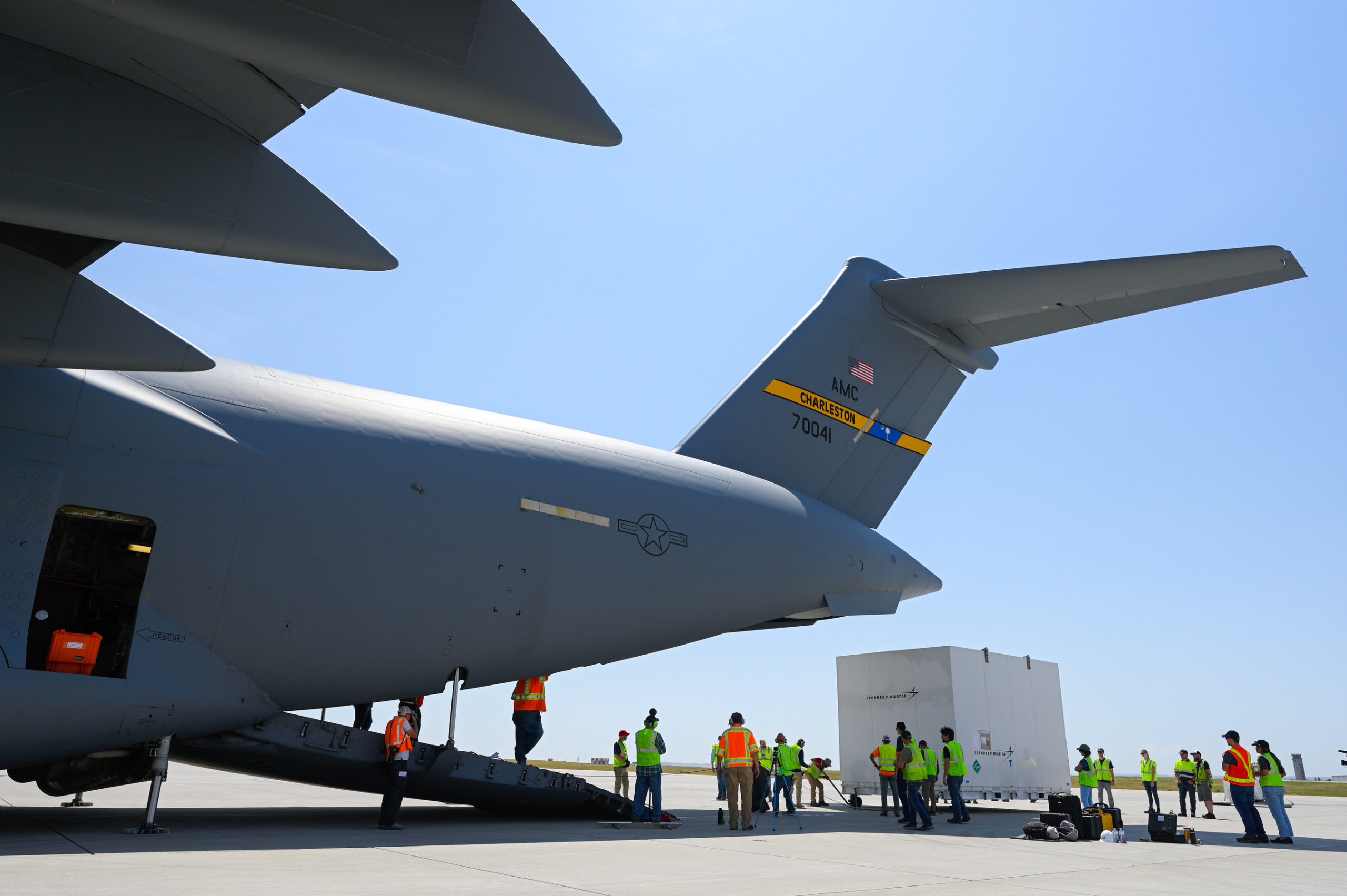
Last Friday, Lucy was loaded onto a cargo plane at Buckley Space Force Base in Aurora, Colorado. The spacecraft had previously been stored inside a converted shipping container at the Lockheed Martin facility in Littleton, Colorado. The conversion turned the shipping container into a mini-cleanroom, essential for keeping Lucy clean and free from contamination.
About 40 people from Lockheed Martin, NASA and Southwest Research Institute were needed to load Lucy onto a C-17 transport aircraft. The flight ended at the Space Shuttle Landing Strip at Kennedy Space Center, where the spacecraft was then transported to its final destination, Astrotech Space Operations.
Lucy will now undergo preparations and testing ahead of its launch.
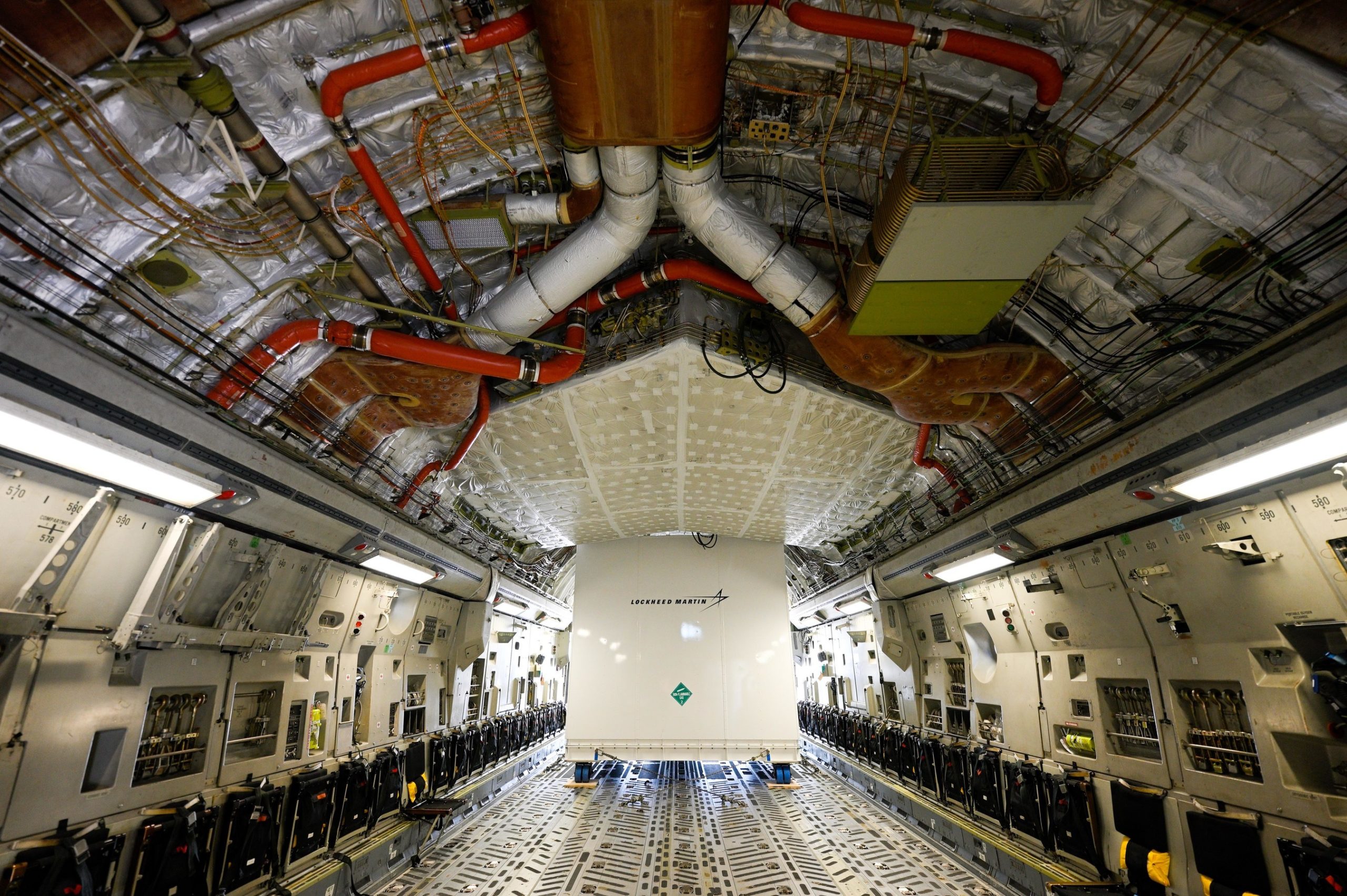
Lucy is the seventh of 13 NASA Discovery-class missions that Lockheed Martin has participated in. Lockheed Martin will also be building two NASA spacecraft to return to Venus at the end of the decade.
During its journey, Lucy will visit one asteroid in the main asteroid belt between Mars and Jupiter and seven asteroids in the Trojans. The first flyby in the main asteroid belt will be in 2025, the first Trojans flyby in 2027 and the last Trojans flyby will occur in 2033.
Lucy will carry updated versions of three heritage instruments:
- L’Ralph, NASA Goddard Space Flight Center – This camera is capable of taking images of the Trojan asteroids on the visible and infrared spectrums. Its images will help scientists determine what the Trojans’ surfaces are made of as they look for the presence of things like ice, hydrated minerals and other organic materials.
- L’LORRI (Long Range Reconnaissance Imager), Johns Hopkins Applied Physics Laboratory – Functioning like the Hubble Space Telescope, this telescopic camera will take black and white images of the Trojans from afar and produce incredibly detailed, high resolution visuals of things like craters on their surfaces — even though the asteroids are not illuminated by any light source. If you were standing on one end of a football field, you’d be able to see a fly on the other end of the field with L’LORRI! Thanks to its ability to look across large distances, L’LORRI will also help Lucy orient itself and navigate through space.
- L’TES (Thermal Emission Spectrometer), Arizona State University – Think of this as the world’s most sophisticated thermometer. It will measure the infrared energy emitted by the asteroids as the sun warms them and detect unique spectral signatures of individual minerals and other surface properties.
It also builds on previous Lockheed Martin planetary missions such as Mars Odyssey, OSIRIS-REx and InSight.
Lucy is named after the 3.2-million-year-old hominin skeleton dubbed “Lucy.” That fossil advanced our knowledge of human evolution, and Lucy will try to uncover new knowledge about the origins of our Solar System and planets.
So why is this mission important?
The Trojan asteroids are considered to be “fossils” left over from the early formation of the Solar System. Since they are still relatively unchanged, they can provide valuable clues about what the Solar System was like a few billion years ago and how it evolved. It is thought that they may contain carbon, water and other volatile compounds necessary for life. They may also give us a glimpse into the physical environment that existed when the planets formed, as well as the conditions that fostered their formation.
The Trojan asteroids share the same orbit as Jupiter. One group moves ahead of Jupiter in its orbit, while the other trails behind the planet. These asteroids are trapped within gravity wells created by the gravitational pull of both the Sun and Jupiter.
Until now, scientists have only been able to study these small, primitive bodies with ground-based and Earth-orbiting telescopes. Lucy will provide the first-ever close-up looks at these worlds.
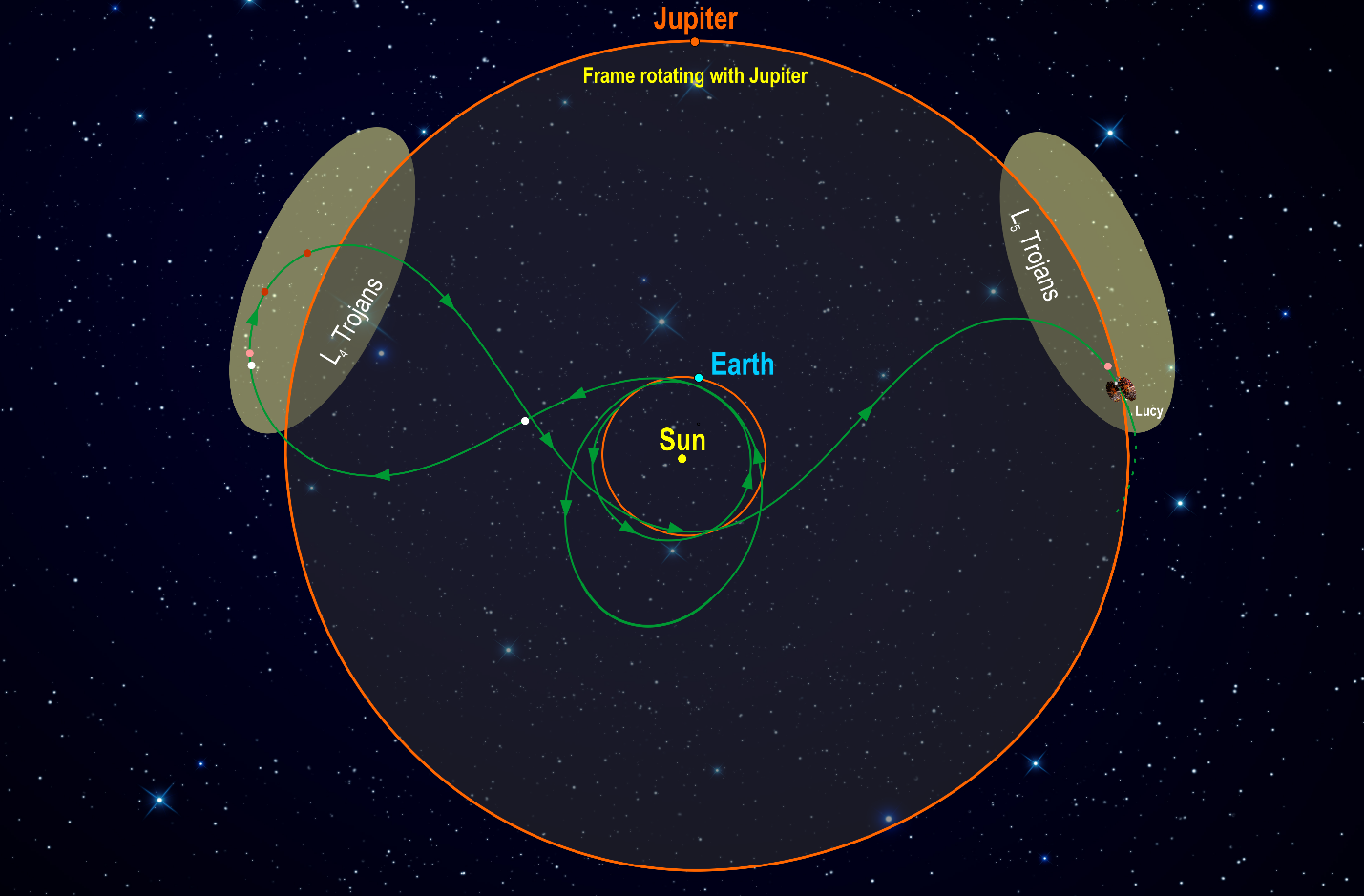
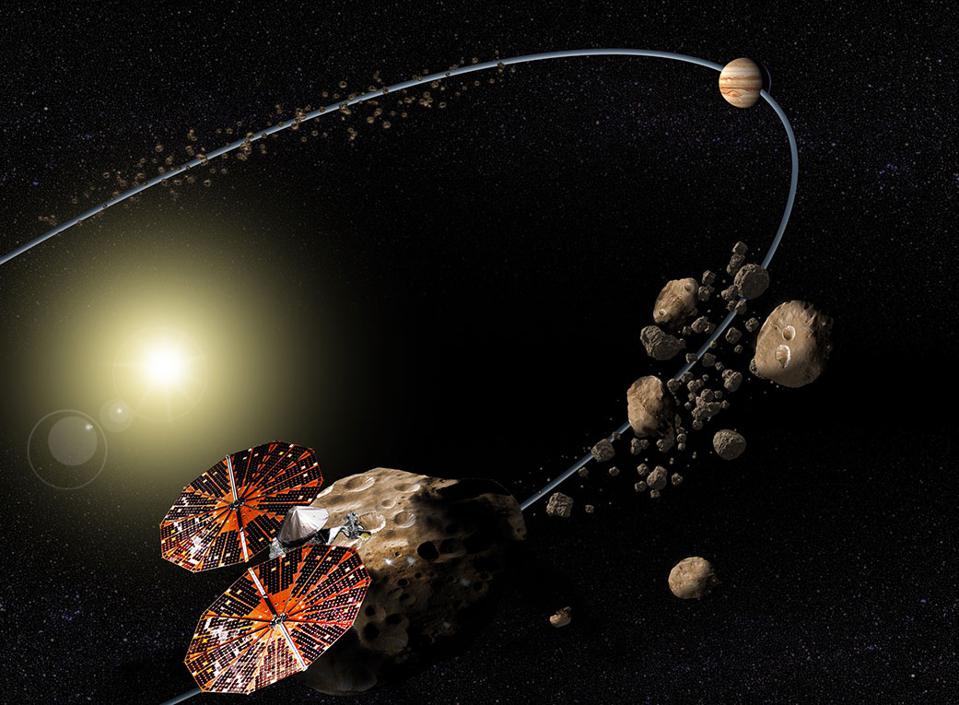
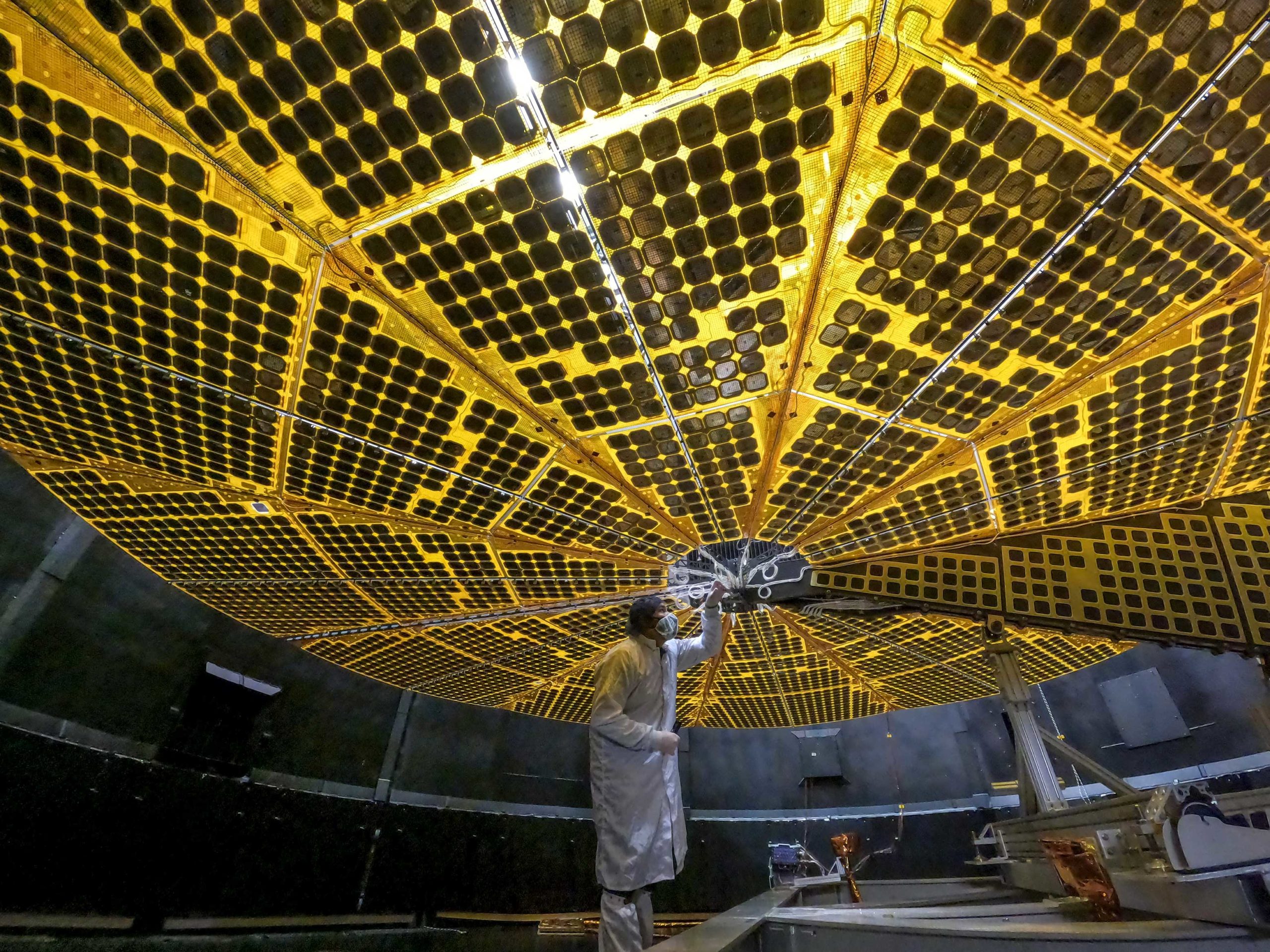
According to current scientific undersanding, the Trojan asteroids were scattered during the formation of the outer Solar System about four billion years ago. They were eventually caught by Jupiter’s gravity and settled into the two groups on either side of the planet that we see today. They have remained there ever since.
The first confirmed Trojan asteroid was discovered by German astrophotographer Max Wolf on Feb. 22, 1906. As more continued to be discovered, they were named after heroes of the Trojan War in Greek mythology, and thus referred to as Trojan asteroids.
There are estimated to be about one million Trojans larger than 0.6 miles (one km) in diameter.
While probes have now been sent to all of the planets and many dwarf planets, moons, asteroids and comets, there are still many places in our Solar System yet to be explored. The Trojans are one such destination, and in just a few years from now, we will have our first close-up look at these primordial bodies.
See the Lockheed Martin website for more information about the Lucy mission.
FOLLOW AmericaSpace on Facebook and Twitter!
Missions » InSight » Missions » OSIRIS-REx »



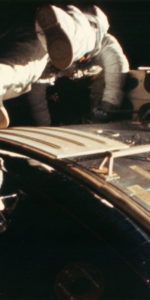
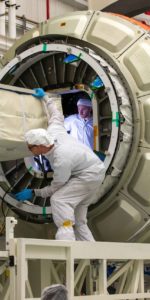
I guess your Atlas V 421 for the OFT-2 launch. I think it is a Atlas V N-22.
Which is right?
John